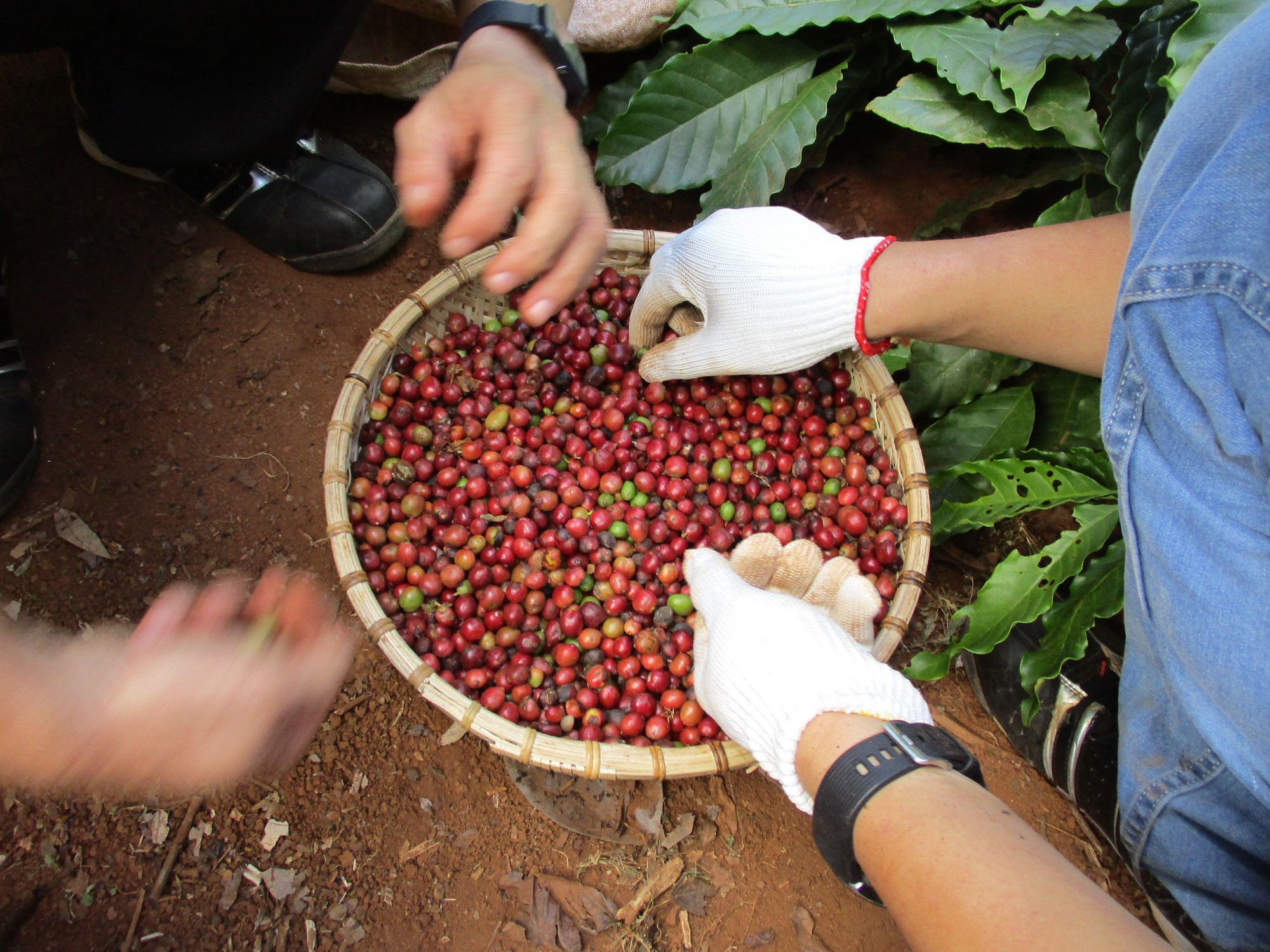Last night, the Vietnamese coffee business community was abuzz when coffee prices on the ICE Futures Europe exchange (London, UK – opened at 4 p.m. and closed at 0:30 a.m. the next day, Vietnam time) continued the upward trend of last week when they reached an unprecedented level of 5,486 USD/ton for November delivery.
Then, it suddenly dropped rapidly and closed the session in the early morning of September 17 at 5,246 USD/ton, down 21 USD/ton compared to last weekend, at the same delivery period in November.
Commenting on this trading session, Mr. Nguyen Huu Long, Director of Vietnam Coffee Academy Joint Stock Company (VCA) (Gia Lai province), said that this coffee floor is mainly a financial transaction, a playground for “speculators” based on the normal commodity trading market.

Vietnam is harvesting coffee crop 2024-2025
“Coffee supply is lower than demand, so speculators will place orders in the direction of expecting prices to increase, pushing coffee prices up, then taking profits. This is also the reference price for businesses when signing futures contracts,” Mr. Long explained.
Quick chat with reporters Lao Dong Newspaper On the morning of September 17, Mr. Nguyen Nam Hai, Chairman of the Vietnam Coffee and Cocoa Association (VICOFA), said that the high coffee prices were due to a shortage of goods. The reason is that the two largest coffee suppliers in the world, Brazil and Vietnam, are both suffering from crop failures due to climate change. In addition, speculative factors on the London floor have also caused strong fluctuations in coffee prices.
Meanwhile, in the domestic market, some growing areas have begun harvesting early ripe fruits at prices ranging from 120,000 – 130,000 VND/kg, relatively stable compared to the past few months.
The Chairman of VICOFA said that domestic coffee prices are stable because the supply has been exhausted and there are few transactions. Vietnam harvests coffee in November and December, so in September and October every year, the coffee output supplied to the market is at its lowest level of the year.
The Import-Export Department (Ministry of Industry and Trade) forecasts that coffee prices will continue to remain high in September due to reduced supply and increased demand. Coffee output in the 2024-2025 crop year in Vietnam is expected to decrease sharply, to a 13-year low. Meanwhile, the world coffee consumption market will increase sharply at the end of the year.
